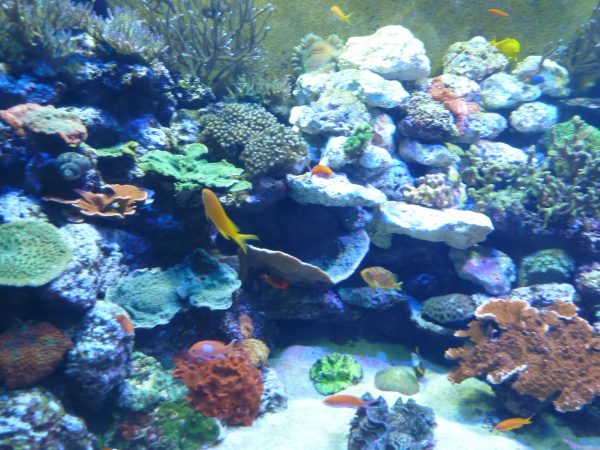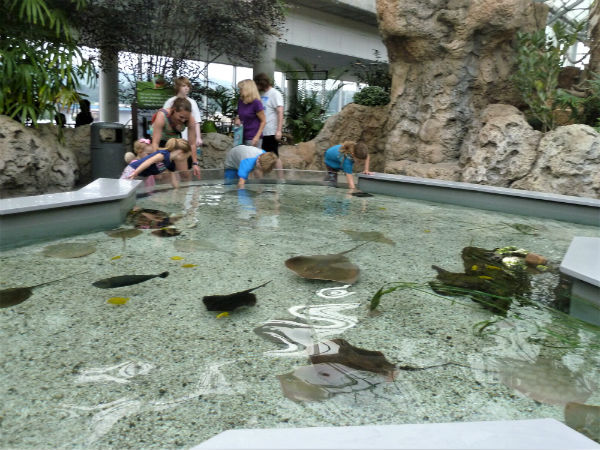

Chattanooga
To anyone who has driven the highways of the Southeast any time since the Franklin Roosevelt administration, Chattanooga is the place where one can drive up Lookout Mountain and see into seven states at once.
For decades, a barn painter named Clark Byers traveled the back roads of the south and decorated barn roofs with variations of the words, “See 7 States from Beautiful Rock City.”
It was the epitome of roadside America and although the mountain peak is just across the state line into Georgia, the place has always been associated with Chattanooga, Tennessee.
To those familiar with the Great American songbook, Chattanooga is the site of the best-known railroad immortalized in music this side of the Wabash Cannonball.
And today the Chattanooga Choo-Choo complex has been preserved and is a fine place to explore a bit of railroad history, and perhaps spend the night in a Pullman railway coach.
The complex is undergoing a renovation but remains open.
For a mid-size city of roughly 173,000, Chattanooga boasts an abundance of ways for visitors to spend their leisure time.
But despite the fact that the once dreary downtown underwent a renaissance in the 1990s, the lively city center on the banks of the Tennessee River is an afterthought for many out-of-staters who associate the city mostly with the seven-state view and the railroad of song.
The Tennessee Aquarium
It shouldn’t be that way, because one can spend a full day by the waterfront. The Tennessee Aquarium, opened in 1992, was the keystone to revitalizing the area.
To be fair, we should say it is two aquariums. One, River Journey, is devoted to fresh water and takes visitors on an aquatic trip from the source of the Tennessee River, to its meeting with the meandering Ohio River and its mouth at the muscular Mississippi.
River Journey opened with the original museum. A second aquarium, Ocean Journey, debuted in 2005. Today, the Tennessee Aquarium is on most lists as one of the nation’s best aquariums.

The River Journey
Upon entering River Journey, visitors step into an Appalachian cove forest, where the air is heavy, birds sing in the trees and reptiles and amphibians make their homes in hollow logs.
A total of 13 alligators reside in the Mississippi Delta section along with turtles of all kinds. Not all turtles have rounded shells; some are bumpy with welt-like protrusions.
Also included in the seven sections in River Journey is River Giants, with catfish the size of small cars; and Rivers of the World.
Where three exhibits devoted to life in the Amazon include the always enchanting seahorses; tropical fish, frogs and lizards; and red-bellied piranha – but not all in the same tanks.
Some frogs are the size of human fingernails and we had fun playing detective, trying to spot as many well-camouflaged frogs as we could.
The Ocean Journey

Ocean Journey is divided into nine sections, and of course, penguins are a perennial favorite.
But if you are looking for cute, spend some time at the Lemur Forest, the aquarium’s newest gallery, opened in a rainforest setting on March 1, 2017.
The stealthy scamperers fascinate with their acrobatics, leaping from perch to perch, and despite the fact that they are primates, those with striped tails seemed almost raccoon-like.
There are over one hundred species of lemurs, all native to Madagascar and most endangered.
Invertebrates reside in the Boneless Beauties section, but as the moldy old adage goes, beauty is in the eye of the beholder.
Mesmerizing might be a more appropriate term. Jellyfish, and there are six species here, have no bones or brains.
But it is easy for one to become spellbound by their quivering and pulsating motions as they drift about like translucent balloons.
One conception was cleared up for us in this section. We had heard of cuttlefish but had never seen one before. Cuttlefish aren’t fish.
They bear a resemblance to squid, but are actually mollusks. And they are not really all that cute.
Just about every major league aquarium has a touch tank, and this one has a few. The largest is in a section of Ocean Journey called Stingray Bay.
It was refurbished and reopened this past February. The touch tank has more than one hundred feet of shoreline, but in the past it was tough for the littlest visitors to partake.
Among other changes, the height and width of the walls have been scaled down, and in some spots steps were added.
The rays glide by pretty quickly and if you’re not fast you might end up with a handful of water.
Senior Aquarist Kyle McPheeters said, “Touch tanks exist to make that one-on-one connection between a person and an animal.
When a little kid can have a one-on-one with a stingray, that drives conservation education.”
So how do stingrays feel to the touch? It kind of depends. My wife found them slippery. I found them rough. So consider them rough and slippery.

What to Do in Chattanooga
If you are visiting Chattanooga on one of those days that would be best spent outdoors, keep in mind that there are plenty of nearby places to stretch one’s legs.
The River Walk, along the banks of the Tennessee River, is inviting but just as we were about to start our riverside stroll the clouds opened up.
However, we did have a chance to explore the outdoor sculpture garden of the Hunter Museum of American Art next door.
The museum houses a wide array of paintings, sculpture, mixed media and photography, including works of wide-ranging artists such as Ansel Adams, Mary Cassatt and Frank Stella.
But on this day — before the rains came – we combined sculpture garden statuary with a relaxing walk.
In Tom Otterness’s bronze “Free Money” a cartoon-like couple dances merrily on a sack filled with cash, begging the question how did they acquire it.
“The Blue Trees” of Konstantin Dimopoulos are literally living trees covered with electric-blue colored pigment which causes no damage to the trees but is meant to raise consciousness about the role of trees as the world’s lungs.
The paint is temporary and will eventually fade. “Boreal,” the minimal horse sculpture by Deborah Butterfield looks to me made of weathered driftwood but is actually cast in bronze.
From seahorses to bronze horses, there is much to see in Chattanooga aside from its legendary iron horse.
If You Go to Chattanooga:
The Tennessee Aquarium also includes an IMAX 3D theater as well as a two-hour-long Tennessee River boat ride on the River Gorge Explorer led by an aquarium naturalist.
The Tennessee Aquarium is open year round, 10-6 daily (while the last admission is at 6 p.m. the aquarium stays open until 7:30.), closed Thanksgiving and Christmas.
Aquarium prices are: $29.95 adults, $18.95 ages 3-12. Discounted combination tickets including admission to the aquarium, the IMAX theatre and the River Gorge Explorer are available.
Information: (800) 262-0695, www.tnaqua.org
Author Bio: Award-winning travel writer Michael Schuman is the author of 46 books and his travel articles have been featured in 200 newspapers and over two dozen magazines. He has a BA from Syracuse University and an MFA from the University of Southern California. His web site is www.michaelschuman.com
- Slow Down and Savor: Why Africa’s Most Elegant Train Journey Should Be Your Next Adventure - July 18, 2025
- How to Plan Your Dream African Safari - July 18, 2025
- How to Visit Hawaii Responsibly: 10 Low-Impact Travel Tips - July 17, 2025
